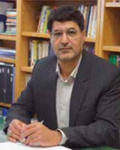| نویسندگان | جعفر حسن زاده-منصور ترابی نیا-محسن اسدی-هاله قائم-رستم منتی-محسن نیازی-عزیز کسانی |
|---|
| تاریخ انتشار | 2016-5-01 |
|---|
| رتبه نشریه | علمی - پژوهشی |
|---|
| نمایه نشریه | SCOPUS ,ISC |
|---|
چکیده مقاله
Background: Social capital has been defined as norms, networks, and social links that facilitate collective actions. Social capital is related to a number of main social and public health variables. Therefore, the present study aimed to determine the factors associated with social capital among the residents of Tehran, Iran.
Methods: In this large cross-sectional population-based study, 31531 residents aged 20 years and above were selected through multi-stage sampling method from 22 districts of Tehran in 2011. The social capital questionnaire, 28-item General Health Questionnaire (GHQ-28), and Short-Form Health Survey (SF-12) were used. Hypothetical causal models were designed to identify the pathways through which different variables influenced the components of social capital. Then, path analysis was conducted for identifying the determinants of social capital.
Results: The most influential variables in ‘individual trust’ were job status (β=0.37, p=0.02), marital status (β=0.32, p=0.01), Physical Component Summary (PCS) (β=0.37, p=0.02), and age (β=0.34, p=0.03). On the other hand, education level (β=0.34, p=0.01), age (β=0.33, p=0.02), marital status (β=0.33, p=0.01), and job status (β=0.32, p=0.01) were effective in ‘cohesion and social support’. Additionally, age (β=0.18, p=0.02), PCS (β=0.36, p=0.01), house ownership (β=0.23, p=0.03), and mental health (β=0.26, p=0.01) were influential in ‘social trust/collective relations’.
Conclusion: Social capital can be improved in communities by planning to improve education and occupation status, paying more attention to strengthening family bonds, and provision of local facilities and neighborhood bonds to reduce migration within the city.
